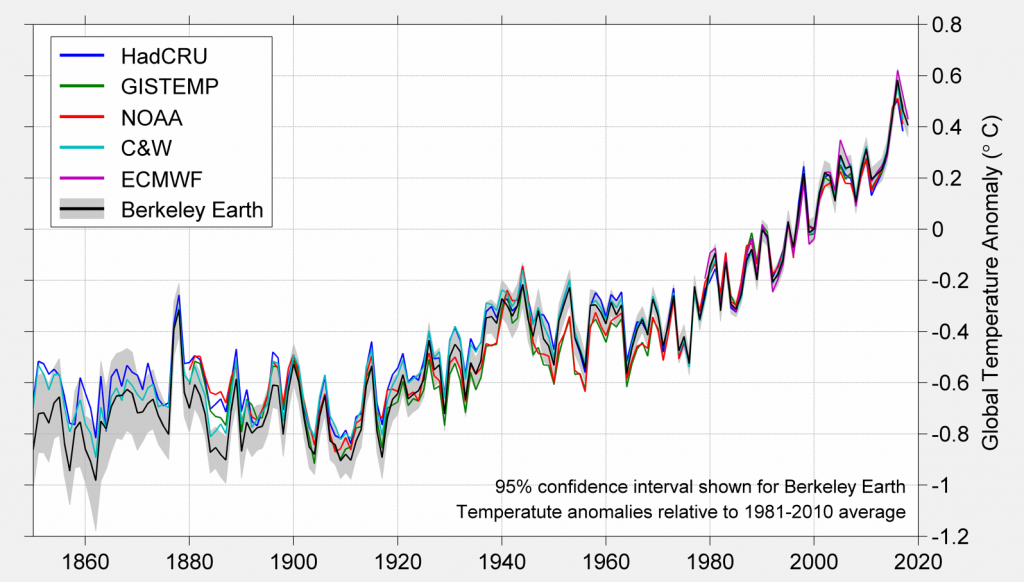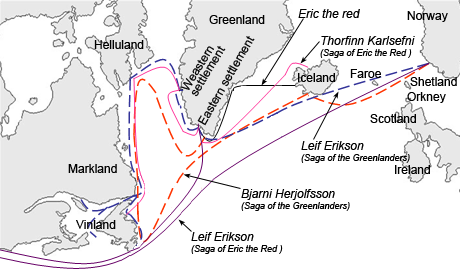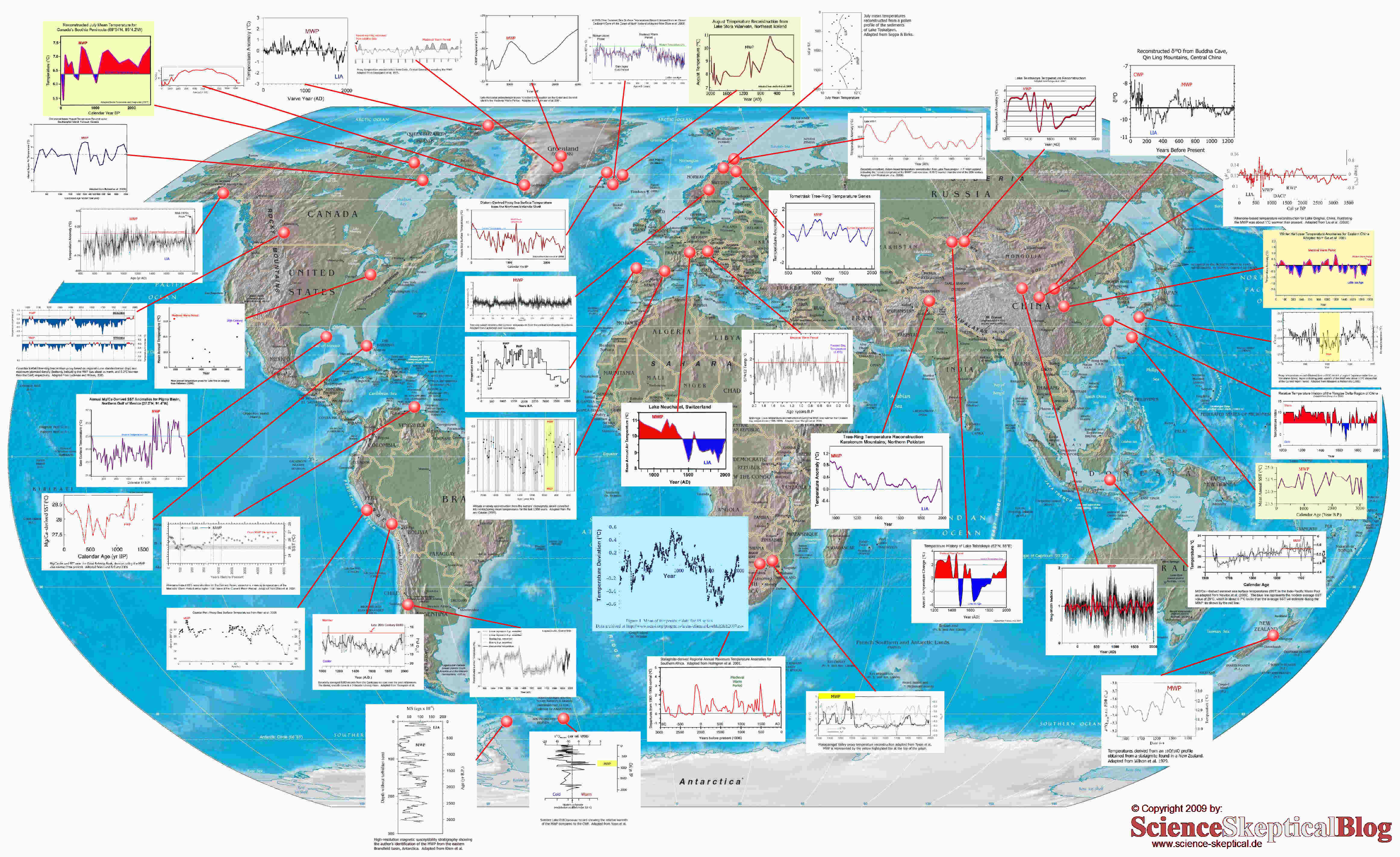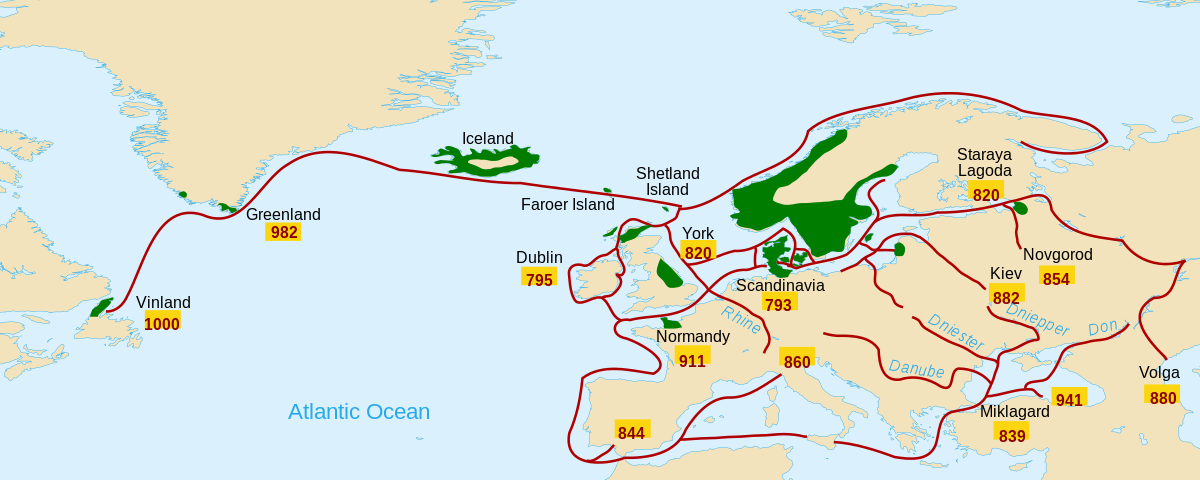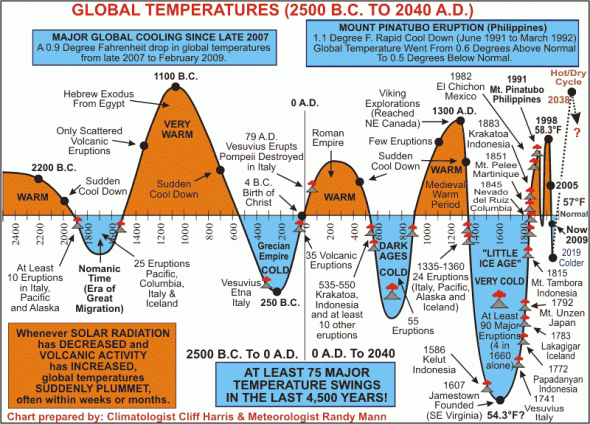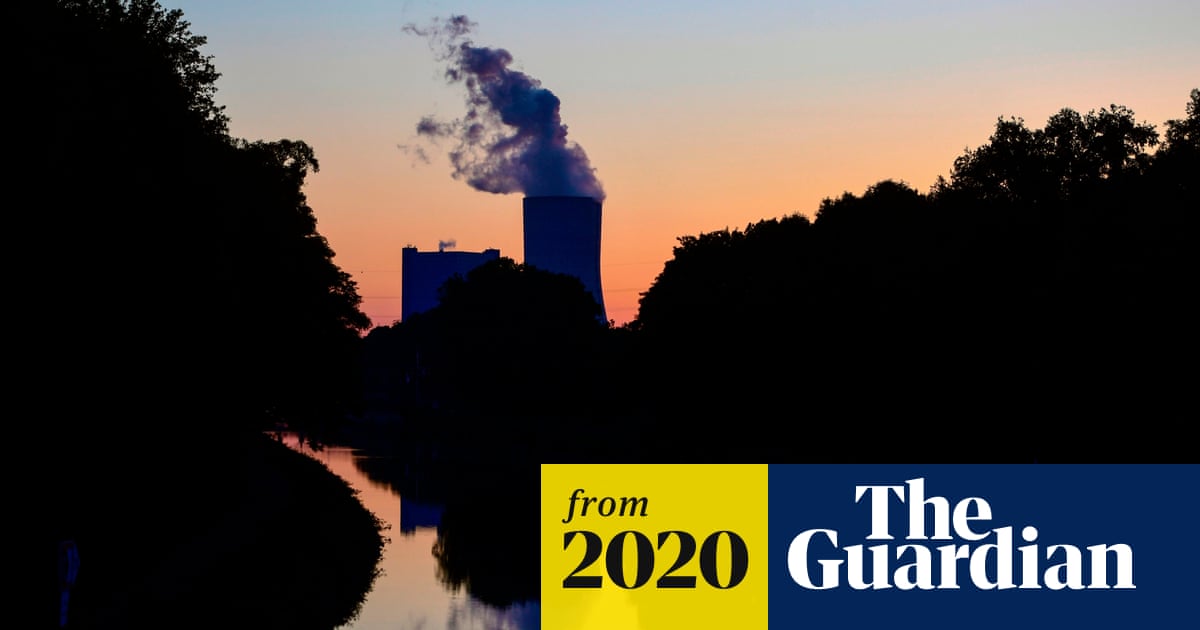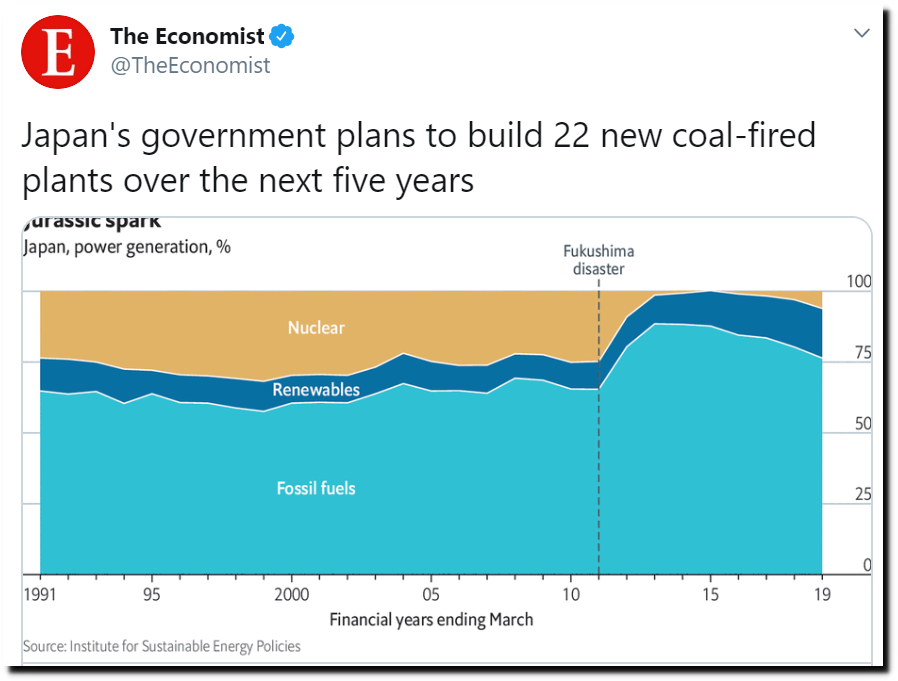Enviros Fear Dems’ New Climate Plan Will Kill Endangered Species
Congressional Democrats today
unveil a “Climate Crisis Action Plan” similar to the Green New Deal proposed by Rep. Alexandria Ocasio-Cortez last year, which sounded like a dream to many progressives and climate activists.
At the heart of the proposal are billions in new subsidies and a federal mandate to achieve
100% renewables.
The top item on the Democrats’ plan is, “Support rapid deployment of wind, solar, energy efficiency, and other zero-carbon energy sources and construction of new transmission infrastructure to deliver clean energy to homes.”
There has already been widespread attention to the high
economic cost of renewable energy mandates.
University of Chicago economists
found that “consumers in the twenty-nine states paid $125.2 billion more for electricity” because of them.
But now, in response to a growing number of lawsuits and regulations, and a new Michael Moore
documentary about the environmental impacts of renewables, the wind industry increasingly finds itself on the defensive.
“Birds have evolved over hundreds of years to fly certain paths to migrate,” said New Hampshire-based environmentalist Lisa Linowes. “You can’t throw a turbine up in the way and expect them to adapt. It’s not happening.”
“Democrats have been sold a false narrative by the industrial wind industry,” said Kevon Martis, a Michigan-based environmentalist and co-founder of the Energy and Wildlife Coalition with Linowes.
“Many Democrats somehow imagine that industrial wind farms, which take hundreds of times more land than a natural gas plant, are better for the environment,” he added.
Martis and other environmentalists are successfully stopping industrial wind farms across the US.
- Last December, environmentalists on California’s northern coast successfully blocked industrial wind turbines that they said would have killed an endangered sea bird, the marbled murrelet, which nests in nearby ancient redwood trees;
- Earlier this month, Ohio regulators demanded wildlife protections for endangered migratory bird species, including the Kirtland’s warbler, for an industrial wind project proposed for Lake Erie. The lake is a critical habitat for birds migrating between their nesting grounds in Canada to South America for the winter;
- A federal judge two weeks ago blocked a transmission line, called the R-Line, proposed to be built straight through a whooping crane habitat in Nebraska. Transmission lines are the number one cause of mortality among whooping cranes. Industrial wind developers needed the transmission line to expand their turbines across the fragile Sand Hills ecosystem;
- Two weeks ago, environmentalists in Hawaii urged the state’s Supreme Court to overturn a decision by the state to approve an industrial wind project that threatened seven endangered native bird species: the nene, pueo, a‘o, koloa maoli, ae‘o, ‘alae ke‘oke‘o, and ‘alae ‘ula.
In their plan, Democrats identify as a high priority the creation of a “
super grid” consisting of transmission lines like the one proposed for the largely pristine Sand Hills of Nebraska, which would have a 3.5-mile buffer and cross 600 individual wetlands.
The wind industry
claims house cats kill more birds than wind turbines. But cats mainly kill small, common birds like sparrows, robins, and jays, whereas wind turbines kill large, threatened, slow-to-reproduce species like hawks, eagles, owls, and condors.
The rapidly spinning blades of wind turbines act like an apex predator that big birds never evolved to deal with.
And because big birds have much lower reproductive rates than small birds, their deaths have a far greater impact on the overall population of the species.
For example, golden eagles will have just one or two chicks in a brood, and usually, less than once a year, whereas a songbird like a robin could have up to two broods of three to seven chicks each year.
The renewable industry claims technical innovations will improve solar and wind — but in reality, nothing can change the lower power density of sunlight and wind.
Even a 10% improvement in the efficiency of solar panels would only slightly reduce the staggering amount of land required to produce the same amount of energy: from 400 times more land than nuclear to 360 times more.
And over the last decade, the vast majority of installed solar panels
have only become 2-3% more efficient.
Solar and wind farms around the world require at least 300-400 times more land on average than natural gas or nuclear plant to produce the same quantity of energy, a calculation easy to make using Google maps.
Vaclav Smil, a widely-respected energy scholar
praised by Bill Gates(among others),
concluded that it would take 25-50% of all land in the US to go 100% renewable. Today, the US uses just 0.5% of its land for energy.
In 2009, Cambridge physicist David MacKay showed that providing all the UK’s energy with 100% renewables would require a greater area than the landmass of the entire country.
By occupying large areas of migratory habitat, wind turbines have also emerged as one of the greatest threats to large, threatened, and high-conservation value birds.
In May, two wind industry workers in Ohio
watched in horror as a wind turbine sliced off the wing of a bald eagle, instantly killing it.
“I was opposed to those windmills from the start because of the impact they could have on wildlife,” said a local activist. “I had been out to California about twenty years ago and saw the carcasses on the ground under the wind turbines.”
Now, wind energy threatens one of America’s most iconic birds.
“Look at the whooping crane,” said Linowes. “With just 235 whooping cranes in the wild, their gene pool is very limited. A rule of thumb is that you need at least a thousand individuals to make sure the gene pool will grow and so you don’t get inbreeding and lose diversity.”
“The Nebraska Sandhills are the most beautiful and environmentally fragile area of the state,” said Tony Baker, a legislative aide to State Sen. Tom Brewer, an opponent of the R-Line project. ”It would leave a scar that you can see from space. You cannot fix things that you do to the Sandhills.”
Save the Sandhills is fighting the R-Line while another group, Preserve the Sandhills, is fighting the expansion of hundreds of industrial wind turbines.
“A take is one thing but this is not just a take,” said the attorney for the conservationists, Bill Eubanks, who temporarily halted the R-Line. “We’re talking about the project impacting the species’ entire existence, impeding their recovery. It’s a scary proposition.”
Conservationists express fear and even grief at the prospects of industrial wind being imposed on local ecosystems.
“The whole ecosystem is declining,”
said a Lake Erie ornithologist about the scuttled project. “Let’s not add another threat on top of that.”
“Killing these manu [birds] would deprive current and future generations of a necessary part of their natural environment and, for native Hawaiians, a vital resource for traditional and customary practices. That is deeply troubling,”
said Dr. Tēvita O. Ka‘ili, a Hawaiian professor of cultural anthropology.
“The environmental impacts are largely irrelevant to wind developers,” said Kevon Martis. “How else can one explain Pattern Energy’s attempt to build twenty-four turbines on the banks of the Yellowstone River? Or RES Americas’ plan to construct turbines overlooking Lake Superior’s Keweenaw Bay?”
As the ecological impacts of industrial wind energy become more visible, renewable energy promoters are pushing industrial solar farms.
But the achievable power density of a solar farm is up to 50 watts of electricity per square meter, with solar farms in northern nations like Germany achieving about a tenth of that.
By contrast, the power density of natural gas and nuclear plants ranges from 2,000 to 6,000 watts per square meter
And building a solar farm is a lot like building any other kind of industrial facility. You have to clear the whole area of wildlife.
In some places such as Texas, where white-nose syndrome, a deadly fungus, has only recently arrived, wind turbines are the single greatest threat to bats.
“There are no other well-documented threats to populations of migratory tree bats that cause mortality of similar magnitude to that observed at wind turbines,” one scientist wrote.
“The wind industry is well aware of the problem yet vigorously resists even modest mitigations known to reduce bat mortality at operating wind facilities,” said Linowes. “The result is that many of our bat species are on a path to extinction.”
In many cases, environmentalists find themselves fighting groups like the Sierra Club, which accept funding from natural gas and renewable interests and advocate industrial wind projects like the one proposed for Lake Erie.
But some local activists are hopeful, in part based on past successes.
“In the cases of the Yellowstone River and Keweenaw Bay,” Martis said, “locals had to intervene to protect those wild places from industrial wind encroachment. Absent those efforts, those wild places would be despoiled.”
“If we stop the R-Project,” said Nebraska conservationist Tyler Rath, “we will stop a lot of wind development, especially in sensitive areas, and save a lot of habitat for endangered species.”
It is notable that many of the conservationists defending wildlife from industrial wind turbines and transmission lines view the Democrats’ refurbished Green New Deal and its call for the “rapid deployment” of wind and transmission lines not as a climate dream but rather as an ecological nightmare.
This isn’t the first time Democrats have shown a willingness to sacrifice wildlife for the wind industry.
In 2013, the Obama administration
gave the wind industry permission to kill condors, an endangered species. No other industry is allowed to kill condors.
Will such concerns move Congressional Democrats? It’s hard to say. Climate change has completely overshadowed the conservation concerns that used to be so important to the Democratic Party.
Michael Shellenberger was Time Magazine’s “Hero of the Environment,” Green Book Award Winner, and President of Environmental Progress, a research and policy organization. He is also the author of several bestselling books., his latest being Apocalypse Never.
Read more at Forbes
